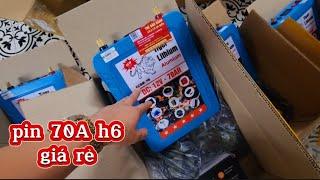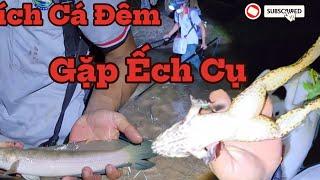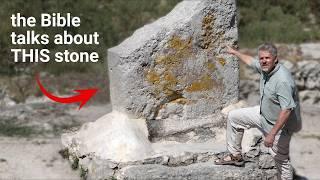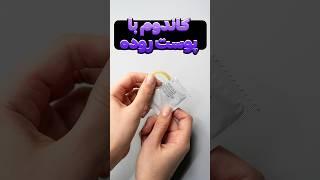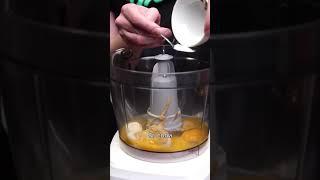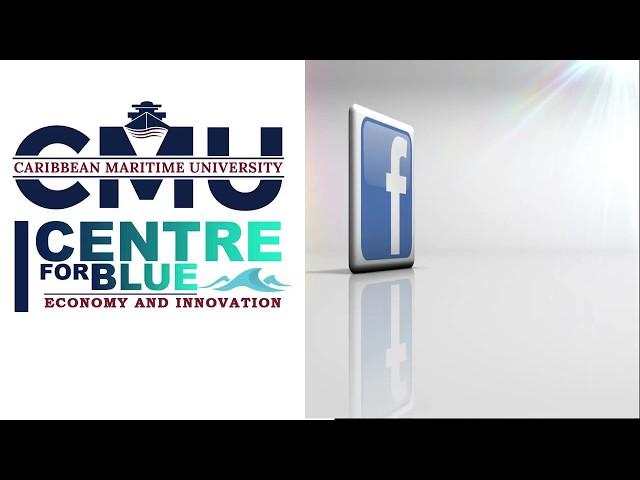
Handover of a JAMBIN to iAspire International
The Centre of Blue Economy and Innovation (CBEI) is on a constant quest to find and implement methods to protect and conserve our ocean.
One such project is the “Jambin Project ”.
This device is a floating water filter that uses aeration technology to trap solid floating waste while simultaneously oxygenating water through surface disturbance and underwater circulation.
Problem
An overwhelming amount of discarded plastics in Kingston harbor after rainfall due to improper disposal of waste.
Plastics are a non-biodegradable material which proves advantageous for preservation, but after initial use, this quality becomes harmful as the material itself seems to last forever.
Disposed plastic materials can remain in the environment for up to 450 years (plastic bottle for example).
Aquatic life-forms eventually fall prey to these plastics, becoming a part of the marine food-web and competing for their spatial ecology. Plankton, the tiniest creatures in our oceans, as well as larger fishes are eating microplastics and absorbing their hazardous chemical. The tiny, broken down pieces of plastic are displacing the algae needed to sustain larger sea life who feed on them.
According to the United Nations Environment Programme, the overall natural capital cost of plastic use in the consumer goods sector each year is US$75 billion.
This waste affects both plant and animal life, damaging our ecosystem and reducing the income of those who rely on said the system for their livelihood along with reduce the environments natural beauty.
Objectives:
Design a device that allows for an easy collection of surface (floating) waste with a maximum surrounding radius of 8 inches. This is so as larger objects would reduce the holding capacity of the garbage storage area and increase the flow rate of water into the device potentially overpowering the pumping device.
The design should have as little negative long- and short-term impact on the environment as possible, capable able of being powered by renewable energies.
Readily respond to changes in tide changes in the area.
Should be able to withstand environmental conditions.
Design Approach:
An air pump focus design was chosen as this method proved advantageous for achieving objectives 2 to 5 with the least maintenance and at a reduced cost when compared to a water pump focus design.
An air pump uses less energy than a water pump.
The less complicated device making maintenance, set-up, and removal easier.
Less affected by its environment as salt decreases the reliability and runtime of a water-based pump.
Working Principle:
As water and floating debris enter the mouth of the device, it is met upon by a pocket of air and falls into an internal floating container. The container freely allows water to escape but holds the debris in place. This floating container also acts as a cut-off should excess water enter the receptacle, disallowing the trapped debris to float out.
Water is removed from the system through the pump action of the discharge chamber. This chamber is constantly supplied with air via an air pump, creating an air/water mixture. The mixture being lighter than the surrounding water floats to the end of the discharge pipe and is removed. Once filled the container is manually emptied and replaced.
The removed water aerates the surrounding area via surface impact and bubble action. The environmental impact can further be multiplied by discharging air at the base of the device. As the air rises in the form of bubbles, it carries along with it nutrients that are trapped beneath and in so aid in the natural recirculating sea-action.
If you interested in a JAMBIN call us +1-876-341-7450 or send us an email:
[email protected]
One such project is the “Jambin Project ”.
This device is a floating water filter that uses aeration technology to trap solid floating waste while simultaneously oxygenating water through surface disturbance and underwater circulation.
Problem
An overwhelming amount of discarded plastics in Kingston harbor after rainfall due to improper disposal of waste.
Plastics are a non-biodegradable material which proves advantageous for preservation, but after initial use, this quality becomes harmful as the material itself seems to last forever.
Disposed plastic materials can remain in the environment for up to 450 years (plastic bottle for example).
Aquatic life-forms eventually fall prey to these plastics, becoming a part of the marine food-web and competing for their spatial ecology. Plankton, the tiniest creatures in our oceans, as well as larger fishes are eating microplastics and absorbing their hazardous chemical. The tiny, broken down pieces of plastic are displacing the algae needed to sustain larger sea life who feed on them.
According to the United Nations Environment Programme, the overall natural capital cost of plastic use in the consumer goods sector each year is US$75 billion.
This waste affects both plant and animal life, damaging our ecosystem and reducing the income of those who rely on said the system for their livelihood along with reduce the environments natural beauty.
Objectives:
Design a device that allows for an easy collection of surface (floating) waste with a maximum surrounding radius of 8 inches. This is so as larger objects would reduce the holding capacity of the garbage storage area and increase the flow rate of water into the device potentially overpowering the pumping device.
The design should have as little negative long- and short-term impact on the environment as possible, capable able of being powered by renewable energies.
Readily respond to changes in tide changes in the area.
Should be able to withstand environmental conditions.
Design Approach:
An air pump focus design was chosen as this method proved advantageous for achieving objectives 2 to 5 with the least maintenance and at a reduced cost when compared to a water pump focus design.
An air pump uses less energy than a water pump.
The less complicated device making maintenance, set-up, and removal easier.
Less affected by its environment as salt decreases the reliability and runtime of a water-based pump.
Working Principle:
As water and floating debris enter the mouth of the device, it is met upon by a pocket of air and falls into an internal floating container. The container freely allows water to escape but holds the debris in place. This floating container also acts as a cut-off should excess water enter the receptacle, disallowing the trapped debris to float out.
Water is removed from the system through the pump action of the discharge chamber. This chamber is constantly supplied with air via an air pump, creating an air/water mixture. The mixture being lighter than the surrounding water floats to the end of the discharge pipe and is removed. Once filled the container is manually emptied and replaced.
The removed water aerates the surrounding area via surface impact and bubble action. The environmental impact can further be multiplied by discharging air at the base of the device. As the air rises in the form of bubbles, it carries along with it nutrients that are trapped beneath and in so aid in the natural recirculating sea-action.
If you interested in a JAMBIN call us +1-876-341-7450 or send us an email:
[email protected]
Тэги:
#CMU #CBEI #iAspire #Kingston #Jamaica #Caribbean_Maritime_UniversityКомментарии:
Handover of a JAMBIN to iAspire International
Joachim Schmillen
Review tour 5 nước Châu Âu Đức Pháp Hà Lan Bỉ Luxemboug 2024
Bước tiếp ước mơ
کوچک ترین پهپاد جنگی جهان
Mavaray Elm
3 Headed Snake
G4G Euki - Topic
Scars Are Soulless - Resurrected (Montage)
EBSM Electro Body Synth Music
The Discovery of Joshua's Great Witness Stone at Shechem
Expedition Bible
How To Take A DMT Blinker!!
TaeStayHigh
کاندوم با پوست روده حیوانات !
Mavaray Elm




